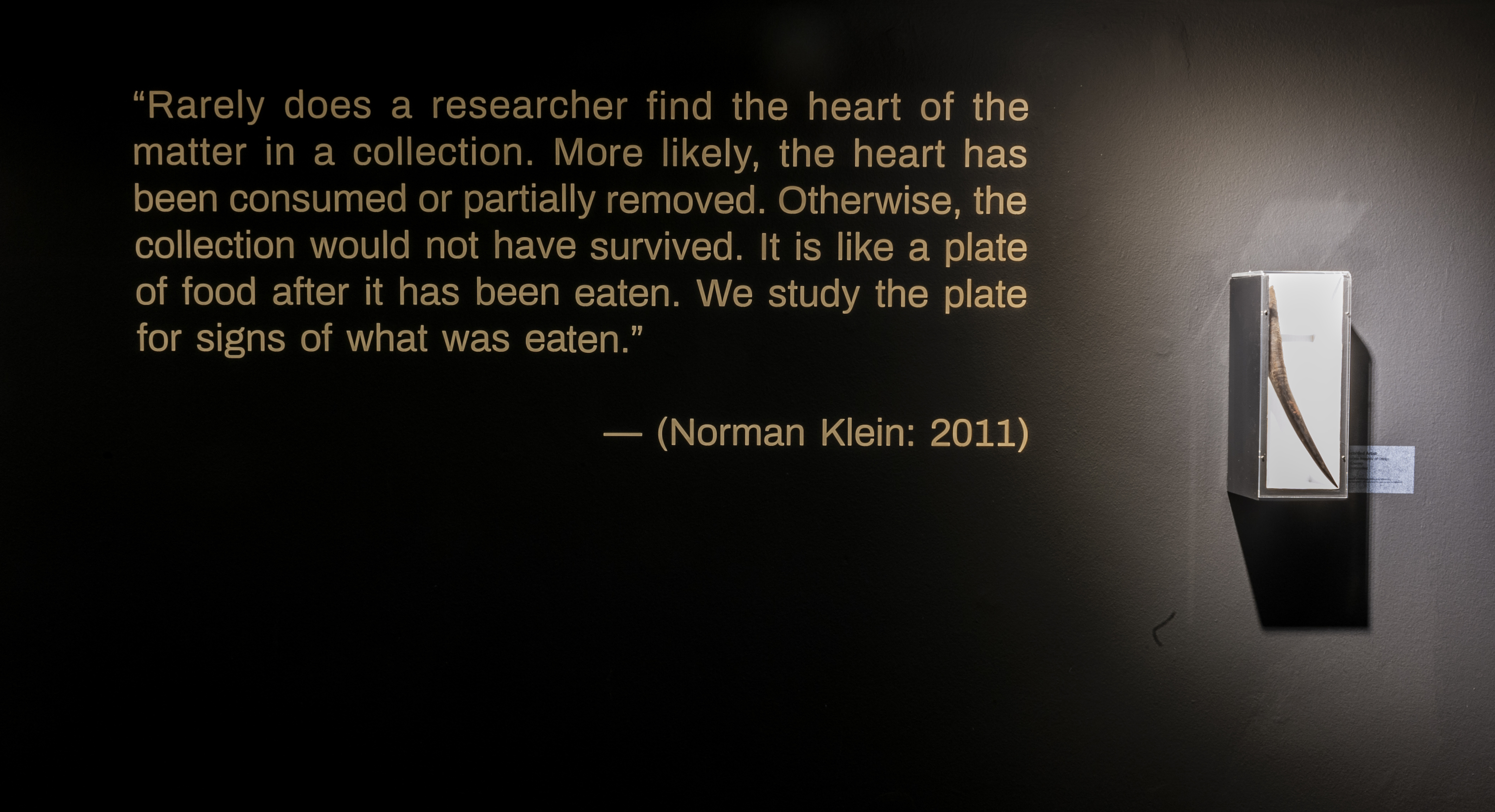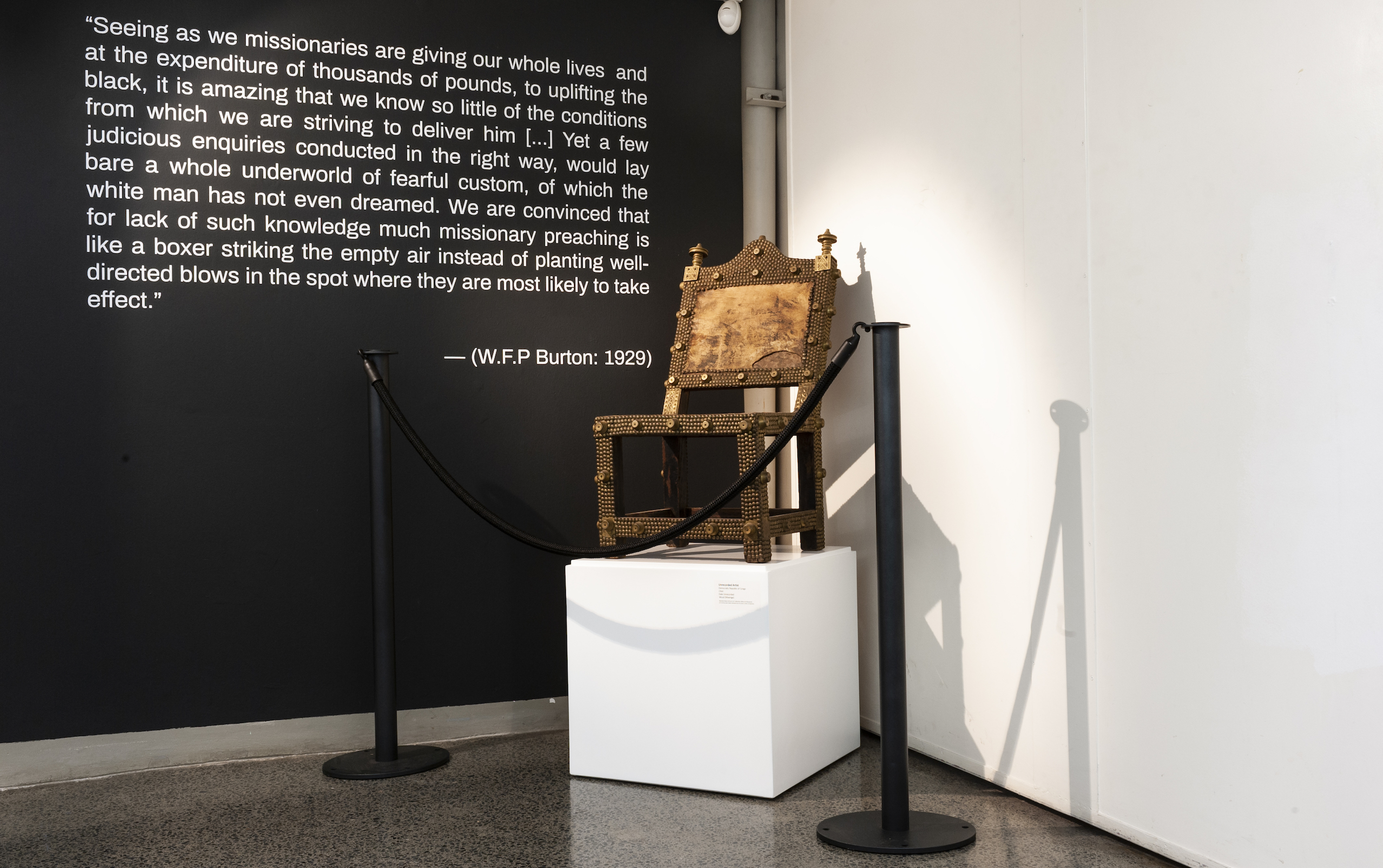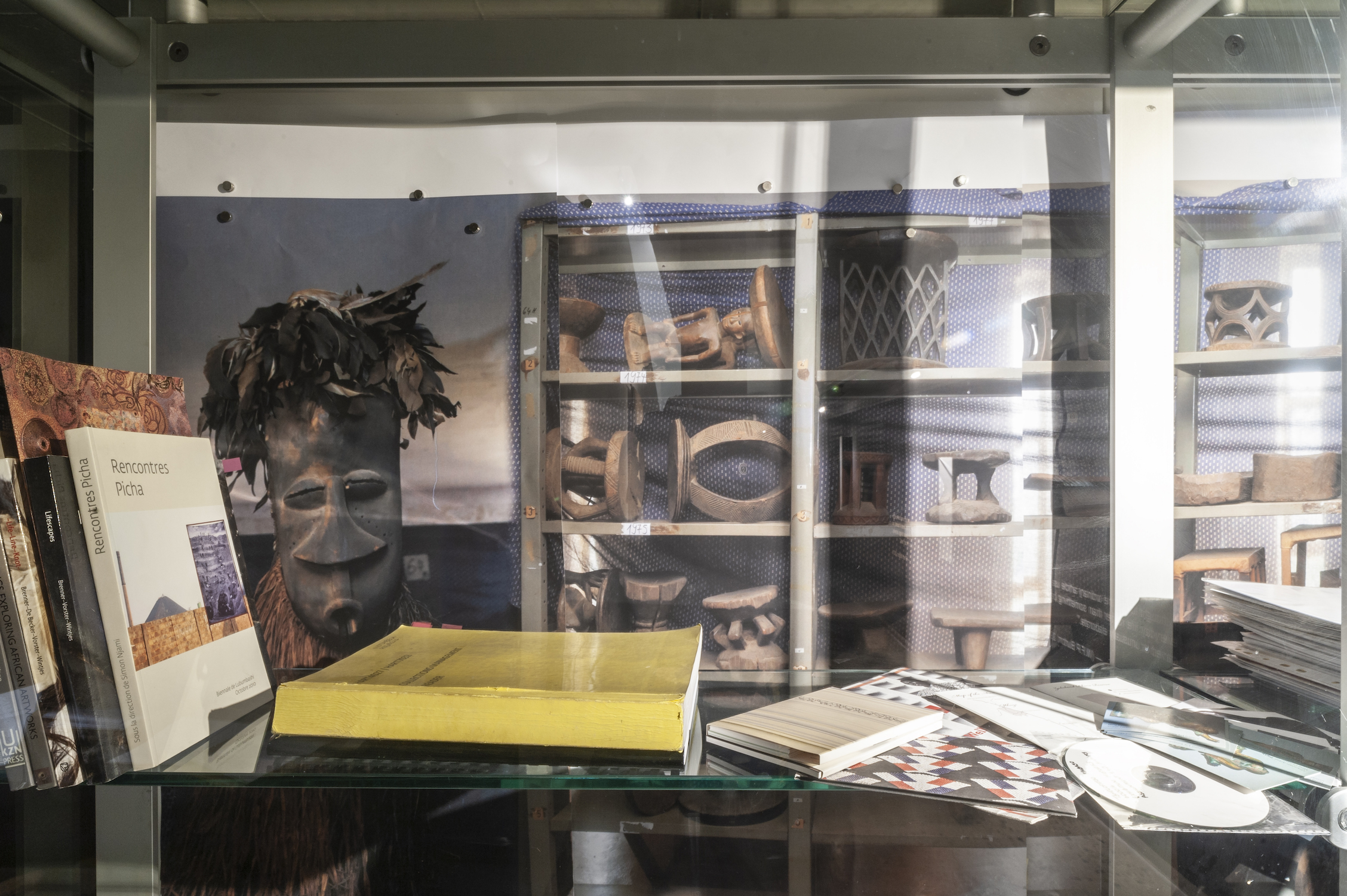The legacy of colonialism and cultural bias continue to haunt the walls and archives of museums and other spaces of exhibition and public memory. This continues to stimulate questions around the role of museums and their historical collections today. Reflecting on this, a group of postgraduate students from the Wits History of Art and Heritage Management Department curated a show titled Artist Unrecorded at WAM. The show included texts, images, and cultural objects originating from the DRC and were obtained by the museum through various sources throughout its history. Much of the information about these objects has been lost, or demonstrates an understanding of them through the colonial lens, and thus misrepresents them.
I interviewed one of the student curators, Gemma Hart, to find out more about the show and its accompanying events.
Please share more about the chosen name for the exhibition, and how it relates to the motivation to put this work together?
The title of the show, “Artist Unrecorded” refers to the shift that museums have made in their labelling classifications from ‘artist unknown’ to ‘artist unrecorded’ as an attempt [to] draw attention to the lack of documentation regarding the makers of these objects at the time of their acquisition.

Could you please share more about the decision to have Hlonipha Mokoena and George Mahashe as guest speakers for the talks programme, and how you think their contribution speaks to the aim of this project?
In a ‘post’-colonial era, museums find themselves confronted with questions of ownership. Specifically, in regard to cultural material objects – which have often been inherited from colonial or ethnographic ventures.
Both Hlonipha and George are interested in working with the archive. Their respective practices are both considered and critical. We hoped to generate alternative insights around the ideas of cultural guardianship, fiction as an approach to working with archival absences and the issues around reparation and the distribution of objects on a micro and macro level.
George Mahashe
Born 1982 in Bolobedu, South Africa, Mahashe operates within the wider field of photography, particularly at the intersection of photography, Anthropology, archives and artistic practice. He recently earned a PhD, and an MA in Fine Art from the University of Cape Town.
He regularly contributes to academic conferences and symposia, and lectures in fine art and anthropology at Wits University. He’s currently working on ‘defunct context’, a series of interventions hosted by the Wits Anthropology Museum.
Hlonipha Mokoena
Associate Professor at WISER and Assistant Dean for Research in the Faculty of Humanities. Before June 2015 she worked in the Anthropology Department at Columbia University.
Hlonipha Mokoena received her PhD from the University of Cape Town in 2005. She is currently an associate professor and researcher at WiSER (Wits Institute for Social and Economic Research) at the University of the Witwatersrand, Johannesburg. Her articles have been published in: Journal of Natal and Zulu History; Journal of Religion in Africa; Journal of Southern African Studies; Ufahamu: A Journal of African Studies; Interventions: International Journal of Postcolonial Studies; Image & Text and Critical Arts. She has also written catalogue essays for Zanele Muholi, Mohau Modisakeng and Andrew Tshabangu.
What has been Wits University and WAM’s past and recent treatment of the images, texts and cultural material’s that are present in the exhibition?
In the past, and perhaps the present too, the acquisition of objects is frequently dictated and directed by the agendas of individual characters often in the context of a convoluted historical narrative. These objects were acquired by Wits Art Museum from different sources and at various moments in the museum’s history. One of these histories is tied to Pentecostal Church missionary, Reverend W.F.P. Burton, a British missionary who corresponded with, and supplied the University of the Witwatersrand (funded by what was then known as the Bantu Studies Department) during the 20s and 30s with cultural material objects from the Congo region.
This later formed part of the Wits Museum of Ethnology Collection and subsequently in 2012 was absorbed into the Wits Art Museum. The adoption and extension of this collection into the museum speaks to a transition: from an ethnographic and anthropological framing, subsequently now plumped into the sphere of fine art. Problematically, these objects carry a complex legacy of diasporic history. However, simply valorizing African art objects by co-opting them into the Western canon of fine art does very little to mediate the problematic ethnographic history.

Please share more about your collective curatorial approach for Artist Unrecorded and how you have reflected on your treatment of what will appear in the exhibition?
As a methodologies-based project, it begins to explore the reading of cultural material objects and their collecting histories in the contemporary moment. Engaging a collection of cultural material objects framed as a form of ‘living knowledge’. In treating absence as a conceptually productive starting point, this exhibition aims to revisit, reflect, and (re)present such objects and narratives.
Several curatorial gestures have been made in the space – a conceptual constellation and textual timeline frame the overarching themes in the exhibition. It is intended to expose the lacuna in the archive, highlight particular moments in this collection’s history, and provide a general map of the motivations and theoretical concerns underpinning the collection and representation of such objects. Historical quotes are distinguished from contemporary thoughts through the use of coloured text.
The lighting in the space dramatically highlights the cultural material objects against a grey background. Transparent labels sit adjacent to provide information based on WAM’s database – at time[s] difficult to read – these visually signify the absences in the body of knowledge surrounding these objects.
A vitrine at the end of the display corridor – usually used to display these kinds of objects – is instead filled with archival material and theoretical texts engaged with during the course. This foregrounds an image of the Musée Nationale de Lubumbashi’s storeroom – pointing to the diasporic links between these two museums and the similarities of their collections.
In addition, a text, “Missionary Pioneering in Congo Forests” chronicles W.F.P Burton’s time in the region. The pages presented in vertical sequence overlap in a dishevelled sweep – extending around the corner to a letter-writing station. WAM has [a] record of letters from Burton. However, the University’s correspondence is suspiciously absent. In response to this, we fashioned our own semi-fictioned letters – imagining what might have been said. Blank pieces of paper and a siren-red letter box offer an invitation for the audience to similarly write letters or questions pertaining to the collection.
The exhibition also serves as a starting point for artist in residence, Rita Mukebo, to engage the collection in an ongoing conversation.
Could you please speak to the ongoing project by the Wits History of Art and Heritage Management Department and Centre d’art Waza? How does this exhibition reflect on and add to this larger project?
In its second year, this iteration is part of an ongoing project by the Wits History of Art and Heritage Management Department and Centre d’art Waza, held in collaboration with Wits Art Museum and the Musee National de Lubumbashi.
Many of the Congolese cultural material objects in both WAM and Musee National de Lubumbashi are strikingly similar – due to their histories of acquisition. Part of the project is also a month-long residency in which Lubumbashi-based artist, Rita Mukebo, has been invited to respond to the collection through her contemporary practice.
Rita Mukebo’s instalment of the exhibition will open on the 6th of June at the Point of Order.
Artist Unrecorded was curated by students Emma Brent, Zakhele Ndlovu, Gemma Hart, Nomvula Dlali, Nikita Raubenheimer, Stefanie Jason and Sven Christian.




















































